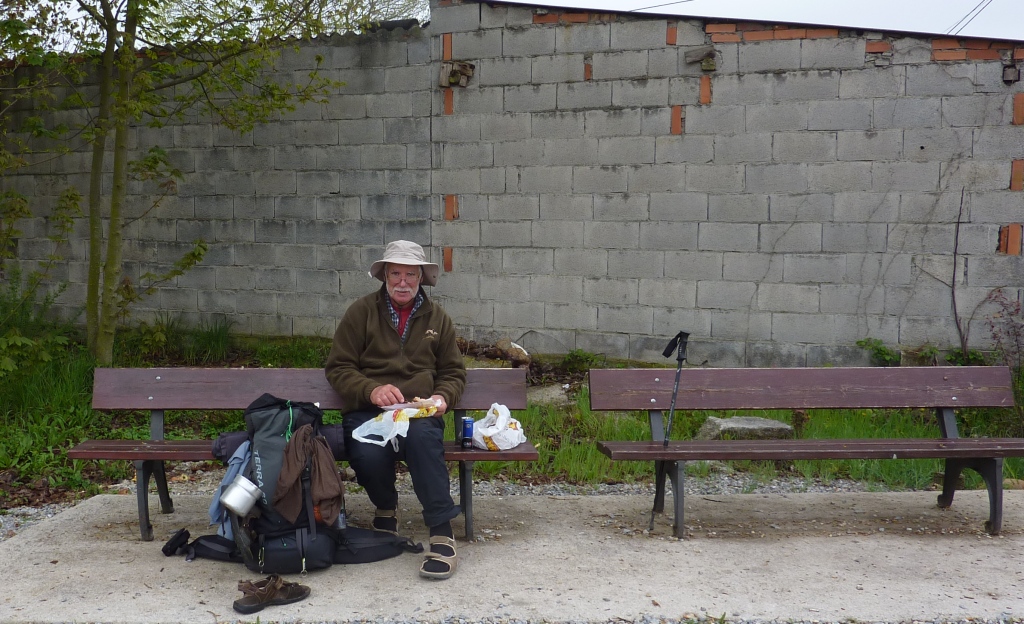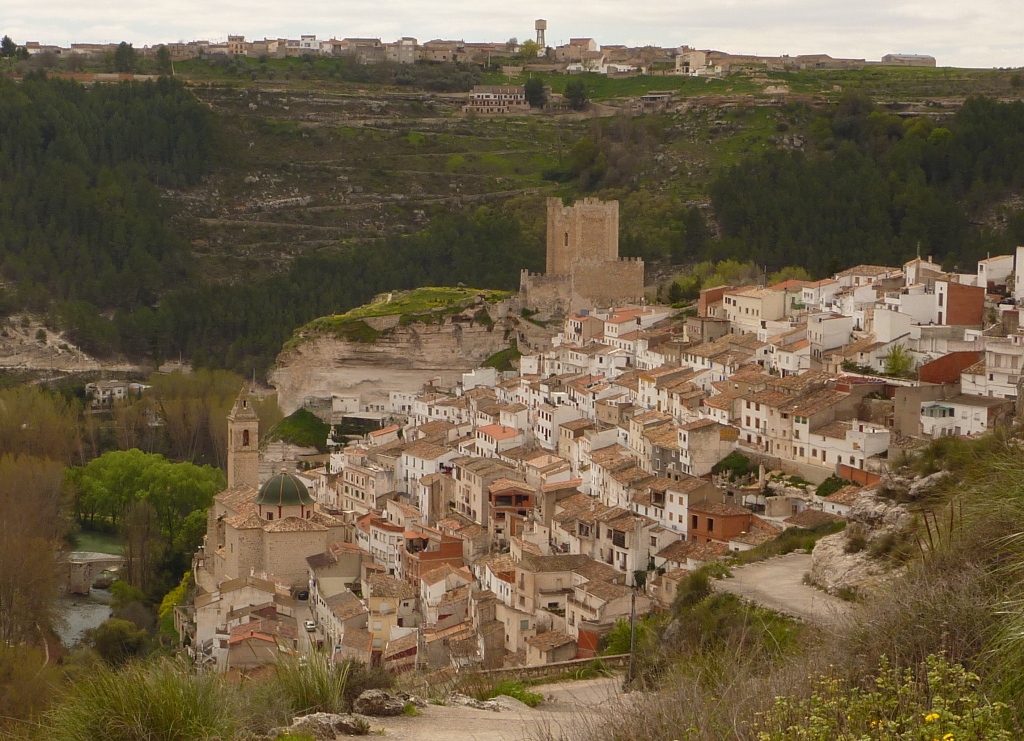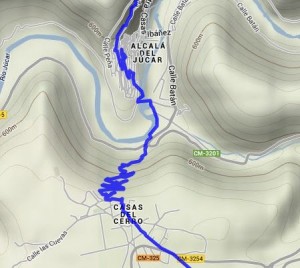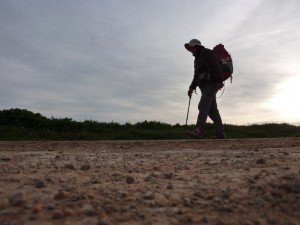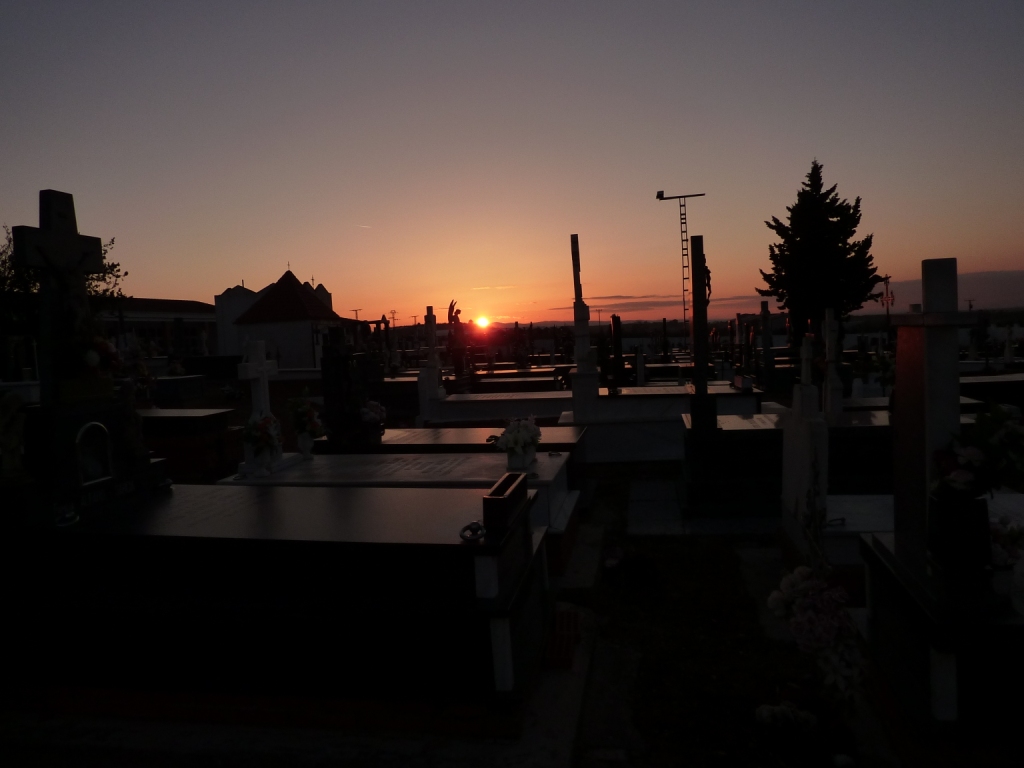Money and food, part 2.
A discourse on food.
When others who walk long distances first told me that food became less important to them when walking, I found it hard to believe. It is counter-intuitive when you think of the extra calories being burned. On my first Camino it took me some time to experience this because I was still rooted in my normal eating habits of three good meals and many snacks in between, albeit that I watch what I eat, ( high-fibre, low fat). I tended to have a “menu” each day which, in Spain, is a fairly substantial meal. By the second week of walking I was losing interest in finding a place to eat and had begun to eat only when I was feeling properly hungry.
[mapsmarker layer=”14″]
As a solitary walker, the communal aspect of eating was rare. Losing the fantastic social element of sharing food diminishes the appetite. I was now only eating in order to refuel. Then I became aware that if I allowed my hunger to build up I began to know exactly what I wanted to eat. It might be chocolate, or anchovies or bread or custard. When I kept goats I learned that it is true that they eat everything: but they are choosey. They vary their diet and will walk far to find a particular plant which complements something else they have eaten. Just like a goat, I was aware of what my diet lacked, fat or protein or carbohydrate or some mineral. This is why I would feel the need for something strange like a boiled potato or a pickled egg.
Fruit is a large part of my diet and in some seasons the camino offers plentiful fruit along the way. The end of September, walking the Camino Portuguese from Coimbra, the way was overhung with grapes; the very aromatic, deep red ones used for making Port wine.
After the harvesting there are still plenty of bunches left hidden in the vines. There were late figs and apricots, apples and pears and even Cape gooseberries. In May, cherries abound and in June and July plums. In France there were many days with wild strawberries and the old railway lines between Manchester and Carlisle are bordered with raspberries. Everywhere there are brambles, but they are sweetest and best in Scotland because of the rain. I have spoken of oranges elsewhere.
Living below the line
Camino life brings alive this closeness between food and its basic function which is to supply energy to our bodies. We walk best when our need and our intake match up and are well-balanced. For most of my life this has not been so. I now believe that a degree of fasting is very satisfying, as all religions have always known. Our Western society does not know this – and that includes the Aussies.
Now I wonder at the almost total commercialisation of food. Excess consumption of inappropriate food is not natural yet we are exposed to adverts for food dozens of times every day, most of it unhealthy. But it is not only obesity which is an undesirable consequence of food industry practice, there is greed, abusive working conditions, exploitation, huge waste of energy on transportation (melons are just beginning to arrive in Spain from Brazil now that home production is falling off for winter), and the destruction of forests and the livelihood of a million small farmers.
There is something else much more alarming which is that we are taking control of all the means of reproduction on earth, replacing nature with our own policies and models to satisfy our uncontrolled appetites and desires. It is all the means of reproduction, of fish, of humans and of crops: we can engineer them all. We are creating mass addiction to food consumption without advocating moderation or fasting. This is disastrous for humanity and only the ecologists and Buddhists and a handful of others seem to see what is happening. Technology itself is not at fault: it is our blind pursuit of financial gain which drives us to abuse it.
So I really did want to Live below the line.
Finding excuses
[mapsmarker layer=”13″]
Alatoz is a hotbed of great Amigos del Camino which will merit a post at another moment. For anyone considering the Ruta de La Lana you will be given here all the help you need to arrive safely in Burgos. In particular, the volunteers will give you a series of telephone contacts and a promise of rescue – a 24 hr service for the whole Ruta de La Lana.
I was once again dropping with tiredness and aching everywhere when I arrived in Alatoz.The attention I received was wonderful but I could not appreciate it. As always, a night’s sleep worked miracles and I walked steadily the next morning to the spectacular town of Alcalár de Júcar.
If you zoom in on the map above you will see that the camino drops into the ravine by zigzagging down the cliff with another steep climb out of the town. The Amigos del Camino had suggested I stay there the night and that they could come over to see me. However, I preferred my solitude and also decided to continue to the next village. The weather was once again sunny without being too hot and the path was flat. It seemed to offer me a gentle afternoon stroll.
No sooner had I set off from a pause above this amazing gorge than I began to feel the great fatigue sweep over me again. My urinary infection was up and running. Every fifteen minutes or so I was stopping to water the verge. I had confidence in the doctor’s promise that the new antibiotics would work but I knew that they take a few days to have an effect. This was my third day, so I hoped for an improvement very soon. My concern though, when I arrived in the town of Casa de Ibañez, was not the infection, nor the fact that the Red Cross post in the bull-ring was out of service as a shelter for the night, but rather that I felt sun-burned. I found this surprising since the sun had been warming, but otherwise weak.
I found a hostal for the night. With great relief I lay down on the bed after a shower and fell asleep. My phone rang. Nobody rings me usually. Then I remembered that the Amigos would have my number recorded since I had rung them the previous day and sure enough a couple of them were driving over to see me. So I got dressed and went down to the bar. Once again I was in no condition to be sociable but could appreciate their level of commitment. Pedro, a doctor, was very sensitive to my tiredness and they didn’t stay long. I was grateful.
The next morning I set off hoping that my infection was on the mend and so it seemed.
As the day wore on I felt much better and decided to be moderate in my food intake. This was just as well for there was nowhere to buy food on the way. I walked until near night-fall and arrived in Vilarta in better shape than I had been used to on this Camino. I had even applied sunscreen to my exposed parts as the evening sun began to bite.
The shop in Vilarta was closed; the bar in Vilarta was closed and when I rang the number for the lodgings which are normally available for pilgrims the woman in charge said she could not come out to open them up. A fierce, cutting wind had begun to chill me as the sun set, so I looked for somewhere to sleep. Fortunately, the gate to the cemetery was only loosely tied up so I was able to go inside and choose a gravestone for the night. The sun-rise the next morning was thrilling and I thanked my companions for their company and lack of snoring as I packed up.
For the first time since my last pilgrimage, the one to Iona, I noticed my heart arrhythmia. This did not alarm me too much since I knew to take another half tablet of whatever it is I take for this each day. So I did take this with my antibiotics, packed up and set off in the
Before I had walked 200 metres I was feeling faint and my heart was beating twice as fast as usual. I began to have difficulty breathing. I had reached a main road so I sat down for a while to see if it would pass. It got worse, so I dialled 112, the emergency number in Spain. This service is offered in English as well as other languages and the response-time, even in the countryside is very swift – normally under 20 minutes in the whole of Spain. I was very soon out of the cold wind inside a cosy ambulance being checked out by a couple of paramedics. They delivered me to a Health Centre in Iniesta where they listened to my heart, said it was beating very fast and then began to tell me off for not wearing gloves. The back of my hands were raw and swollen, which I had put down to a mixture of sun and wind. I had been soaking them in aftersun. The parts of my feet where my sandals did not protect me were equally raw. I was more alarmed for my heart than for my hands but I accepted the chiding and was told to sit until my heart rate returned to normal. The doctor advised me not to walk any further that day.
It was good advice and when I escaped the first thing I did was eat. Starved my body requested three jammy doughnuts. This was the medicine I really needed. My self diagnosis was that the antibiotics and lack of food, together with the physical exertion of the previous day with the descent and ascent to the Júcar combined to set off the arrhythmia. I began to question the wisdom of living below the line on porridge and lentils for a week.
It dawned on me later that I recalled seeing the word “photosensitive” when reading the information about the antibiotics. I went to a chemists in mid-afternoon. The pharmacist was none too happy to be awakened from his siesta. The afternoons are silent and sacrosanct in most of Spain. I explained about the antibiotics and showed him my hands. “Go immediately to the doctor, “he said, “immediately.” “But it’s siesta time,” I said, newly conscious that I didn’t ever again want to disturb somebody’s siesta. “Am I less important than a doctor?” he asked.
I disturbed the doctor next door who, out of revenge, stuck a needle in my bottom and gave me anti-histamine tablets. The discomfort in my hands began to melt away like magic.
I still wonder if my decision not to live for a week on 1 euro a day was justified by this mixture of physical problems I had at the time. Whatever, I didn’t do it, but I think it was just an excuse.

